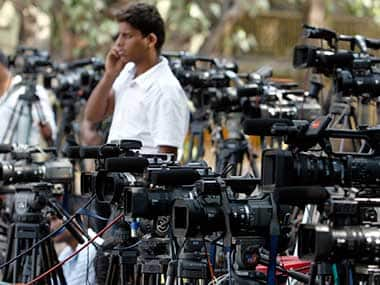The Telecom Regulatory Authority of India today published their Recommendations on Guidelines for Television Ratings Agencies. The 82 page recommendations are unusually strongly worded, and suggests the direct involvement of the Ministry of Information and Broadcasting in television audience measurement. The recommendations do not seem to have taken into account the biggest problem faced in measurement in India – the funding. The recommendations define a minimum panel size of 20,000, ramping up to 50,000 by the fourth year.[caption id=“attachment_1101073” align=“alignleft” width=“380”]
 New norms for TV ratings. Reuters[/caption] There’s no answer as to how this is funded. Similarly, the recommendations say that the measurement should cover the entire country, with no answer as to how this would be funded. Broadly, the recommendations are as follows: • Guidelines for the rating agencies shall be notified by MIB, and shall be applicable to ALL rating agencies in India • Guidelines will cover, among other aspects, cross-holding, methodology, complaint redressal, audit and disclosure • All agencies to obtain registration from MIB • Any member of the Board of Directors of the rating company shall not be in the business of broadcasting/advertising/advertising agency • Minimum panel size of 20,000, to be increased each year by 10,000 till the panel is 50,000. The issue of crossholdings finds significant mention in the document. “No single company/legal entity, either directly or through its associates or inter-connected undertakings, shall have substantial equity in both rating agencies and broadcsters/advertisers/ advertising agencies.” “A promoter company/member of the Board of Directors of the rating agency cannot have stakes in any broadcaster/advertiser/advertising agency either directly or through its associates or interconnected agencies.” Trai raps both TAM and the yet-to-be-in-business BARC (Broadcast Research Council of India) on the knuckles. “For over four years, little or no progress has been made in implementing the Authority’s recommendations or, for that matter, in devising and instituting a reliable and transparent rating system,” Trai says. There’s a bit of a threat in the document, too. “Since the past track record is not especially confidence-inspiring, there is, therefore, the lurking doubt whether effective action will be taken to implement the recommendations now being made…” “The Authority cannot be a mute spectator to continued inaction…” “The Authority may suo moto intervene in the larger public interest…” Just when BARC seemed to have got their act together and looked set for a summer 2014 launch, Trai, which seems to be oblivious of the developments at BARC (going by their document) gets needlessly provocative and aggressive, rather than play the role of the facilitator it should have remained. Finally, these are merely recommendations. Hopefully, calmer thinking will see that they remain just that: a set of recommendations.
New norms for TV ratings. Reuters[/caption] There’s no answer as to how this is funded. Similarly, the recommendations say that the measurement should cover the entire country, with no answer as to how this would be funded. Broadly, the recommendations are as follows: • Guidelines for the rating agencies shall be notified by MIB, and shall be applicable to ALL rating agencies in India • Guidelines will cover, among other aspects, cross-holding, methodology, complaint redressal, audit and disclosure • All agencies to obtain registration from MIB • Any member of the Board of Directors of the rating company shall not be in the business of broadcasting/advertising/advertising agency • Minimum panel size of 20,000, to be increased each year by 10,000 till the panel is 50,000. The issue of crossholdings finds significant mention in the document. “No single company/legal entity, either directly or through its associates or inter-connected undertakings, shall have substantial equity in both rating agencies and broadcsters/advertisers/ advertising agencies.” “A promoter company/member of the Board of Directors of the rating agency cannot have stakes in any broadcaster/advertiser/advertising agency either directly or through its associates or interconnected agencies.” Trai raps both TAM and the yet-to-be-in-business BARC (Broadcast Research Council of India) on the knuckles. “For over four years, little or no progress has been made in implementing the Authority’s recommendations or, for that matter, in devising and instituting a reliable and transparent rating system,” Trai says. There’s a bit of a threat in the document, too. “Since the past track record is not especially confidence-inspiring, there is, therefore, the lurking doubt whether effective action will be taken to implement the recommendations now being made…” “The Authority cannot be a mute spectator to continued inaction…” “The Authority may suo moto intervene in the larger public interest…” Just when BARC seemed to have got their act together and looked set for a summer 2014 launch, Trai, which seems to be oblivious of the developments at BARC (going by their document) gets needlessly provocative and aggressive, rather than play the role of the facilitator it should have remained. Finally, these are merely recommendations. Hopefully, calmer thinking will see that they remain just that: a set of recommendations.
Anant Rangaswami was, until recently, the editor of Campaign India magazine, of which Anant was also the founding editor. Campaign India is now arguably India's most respected publication in the advertising and media space. Anant has over 20 years experience in media and advertising. He began in Madras, for STAR TV, moving on as Regional Manager, South for Sony’s SET and finally as Chief Manager at BCCL’s Times Television and Times FM. He then moved to advertising, rising to the post of Associate Vice President at TBWA India. Anant then made the leap into journalism, taking over as editor of what is now Campaign India's competitive publication, Impact. Anant teaches regularly and is a prolific blogger and author of Watching from the sidelines.
)